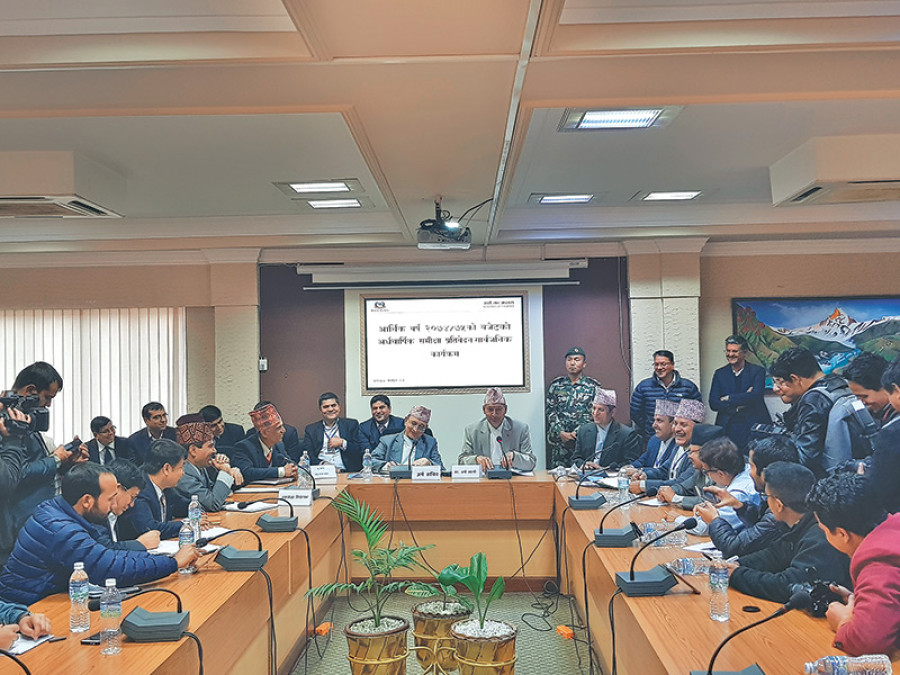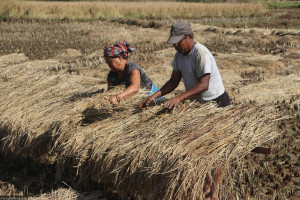Money
Govt to introduce austerity measures as deficit widens
The government is all set to introduce austerity measures, as its budget deficit is widening due to higher recurrent expenditure, error in calculation of savings in the last fiscal year and low mobilisation of foreign grants.
The government is all set to introduce austerity measures, as its budget deficit is widening due to higher recurrent expenditure, error in calculation of savings in the last fiscal year and low mobilisation of foreign grants.
The government’s budget deficit—revenue plus grants minus expenditure—stood at Rs49 billion as of Tuesday, which is around 1.9 percent of the gross domestic product, according to the Ministry of Finance. This deficit had stood at Rs35.5 billion in mid-January.
“This shortage of funds at the central level has prompted us to cut down on spending. However, only unnecessary spending would be slashed,” said Finance Minister Yuba Raj Khatiwada.
The austerity measure includes lower spending in purchase of vehicles, fuel and office materials, including computers, according to Finance Secretary Shankar Prasad Adhikari. “Also, number of foreign trips would be reduced,” Adhikari said. “However, adequate funds will be provided to ongoing projects that are making good progress.”
One of the major reasons for the shortfall in funds at the central level is error in calculation of last fiscal year’s savings. When the government prepared budget for the current fiscal year, it had said that around Rs102 billion in savings of last fiscal year would be carried over to cover expenses of this fiscal year. This year’s budget of Rs1,279 billion was framed based on this assumption. But by the time last fiscal year came to an end, the government’s treasury was in deficit of Rs48 billion, according to Adhikari. This is said to have created shortage of funds for the government in the current fiscal year and widened budget deficit.
Lately, the government has also lagged behind in mobilisation of foreign grants, which is another reason for widening of budget deficit. The government, for example, saw 52 percent drop in usage of foreign grants in the first half of the fiscal year to Rs7.6 billion.
While the government’s income sources are shrinking its recurrent expenditure has surged largely because of transfer of grants to local bodies.
“To address these problems we have no option but to maximise revenue collection by plugging revenue leakages, collecting taxes beyond the target set for this year and resorting to other measures,” Finance Minister Khatiwada said. “We are, thus, planning to make the tax system more efficient by enhancing tax compliance and uprooting the problem of under-invoicing.”
Govt to utilise 85pc of budget
KATHMANDU: The Ministry of Finance has revised the expenditure estimate downwards for the current fiscal year, exposing the problem of low fund absorptive capacity, which is becoming chronic. The government had launched a budget of Rs1,279 billion for fiscal year 2017-18. But on Wednesday, the Ministry of Finance said only Rs1,083 billion, or 84.7 percent of the total allocation, is likely to be spent till the end of the fiscal year.
The government had revised its budget expenditure plan, as its capital spending is likely to remain way below the target.
The government has projected capital spending to stand at 70 percent of the allocation at the end of the fiscal year. The government had earmarked Rs335.2 billion for capital spending. But actual spending till the end of the fiscal year is likely to stand at Rs234.6 billion, according to the Finance Ministry. The government had spent only 65 percent of the capital budget in the last fiscal year. (PR)
GDP growth forecast revised
KATHMANDU: The Ministry of Finance (MoF) has revised economic growth forecast for the current fiscal year to over 6 percent from 7.2 percent predicted in the beginning of 2017-18. Some of the reasons for the downward revision are fall in production of paddy, which makes major contribution to the gross domestic product, and reduction in consumption due to fall in remittance income. (PR)




 16.12°C Kathmandu
16.12°C Kathmandu












